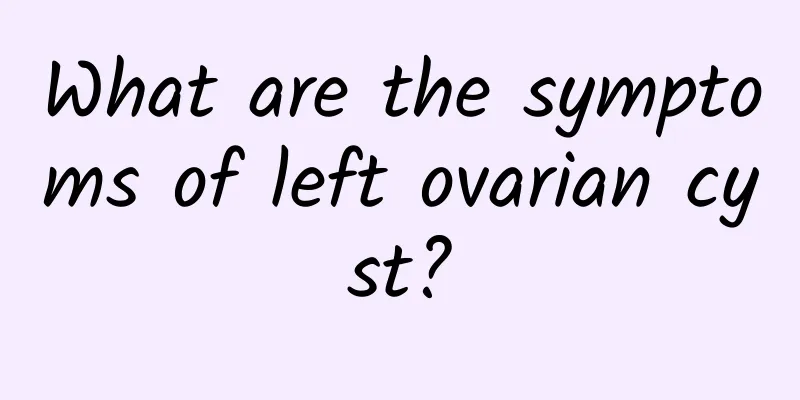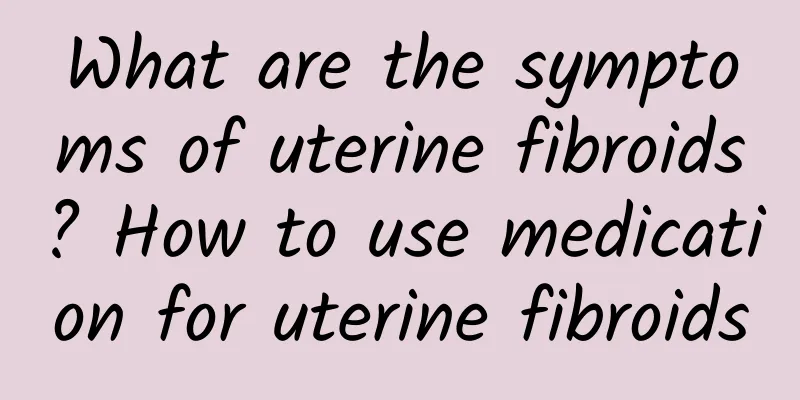What are the symptoms of left ovarian cyst?

|
Symptoms of a left ovarian cyst may include lower abdominal pain, irregular menstruation, frequent urination, or constipation, depending on the type and size of the cyst. Treatment options include observation, medication, and surgical intervention. 1. Lower abdominal pain is one of the common symptoms of left ovarian cysts. The enlargement of the cyst may compress the surrounding tissues, causing persistent or intermittent pain. The pain may be concentrated in the left lower abdomen, or it may radiate to the waist or thigh. If the pain suddenly intensifies, it may indicate that the cyst has ruptured or twisted, and you need to see a doctor immediately. 2. Irregular menstruation is also a common manifestation of left ovarian cysts. Cysts may affect the secretion of ovarian hormones, leading to irregular menstrual cycles, increased or decreased menstrual flow. Some patients may experience prolonged menstruation or amenorrhea. This condition may be related to functional cysts such as corpus luteum cysts, which usually resolve on their own within a few months. 3. Frequent urination or constipation may be related to cyst compression of the bladder or intestines. Larger cysts may occupy pelvic space, resulting in reduced bladder capacity or restricted intestinal motility. Patients may experience frequent urination, difficulty in defecation, or abdominal distension. These symptoms usually worsen with the enlargement of the cyst and require imaging examinations to confirm the diagnosis. Treatment methods include observation, drug therapy, and surgical intervention. For cysts with no symptoms or mild symptoms, doctors may recommend regular ultrasound examinations to observe changes in the cysts. Oral contraceptives are commonly used in drug treatment to regulate hormone levels and inhibit cyst growth. Traditional Chinese medicine conditioning such as Guizhi Fuling Pills and Xiaoyao Pills can also be used as auxiliary treatment. Surgical treatment is suitable for cases where the cysts are large, the symptoms are obvious, or malignancy is suspected. Common surgical methods include laparoscopic cyst removal, oophorectomy, etc. The symptoms of left ovarian cysts vary, and treatment options need to be selected based on specific circumstances. Regular physical examinations and timely medical treatment are the key to prevention and early detection. |
<<: Irregular menstruation and excessive vaginal discharge
>>: There are several types of abnormal leucorrhea
Recommend
What should I do if I have multiple uterine fibroids? What are the symptoms of multiple uterine fibroids?
Many women are afraid of uterine fibroids, especi...
How to treat cervicitis
Cervicitis is one of the common gynecological dis...
Introduce the main knowledge of cervicitis care
Cervicitis is a disease with a high incidence rat...
What does a small amount of fluid in the uterine cavity mean after abortion? Can the fluid in the uterine cavity heal on its own?
1. Definition and causes of a small amount of ute...
Adjust 7 crooked postures! Transform into a beautiful clothes hanger
Modern people lead busy lives and are under great...
Does bleeding during pregnancy mean miscarriage? There are 6 common factors for bleeding during pregnancy
Many pregnant mothers, while rejoicing at the tho...
How serious are the dangers of painless abortion?
Abortion mainly refers to artificial abortion, an...
What foods should be avoided for Bartholinitis?
The reason for suffering from Bartholinitis is th...
Eat tofu to slim your hips and lose weight, it is great with vegetables
There are many benefits to eating tofu. Studies h...
Teacher Annie teaches you 3 yoga slimming tricks to easily create slender legs
Are you always dissatisfied with your body shape,...
Say goodbye to stiffness and clicking! 5 stretching exercises to relax
[Key Points]: Regular stretching exercises can he...
How to deal with unbearable vulvar itching in patients with vulvar leukoplakia Methods to relieve vulvar itching
Vulvar leukoplakia is a white spot on the vulva c...
What are the dangers of cervical hypertrophy?
Cervical hypertrophy, as a common condition of ch...
Symptoms of pelvic inflammatory disease in women can cause lower abdominal distension
Experts say that the symptoms of pelvic inflammat...
What is the reason for the menstrual period to be more than half a month late?
What is the reason for menstruation being more th...









